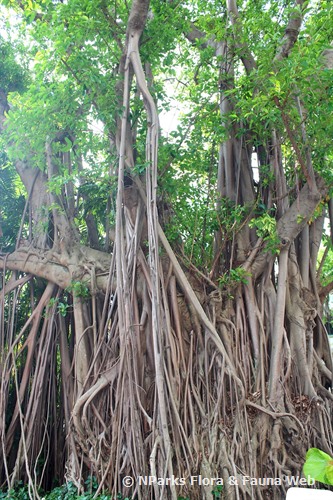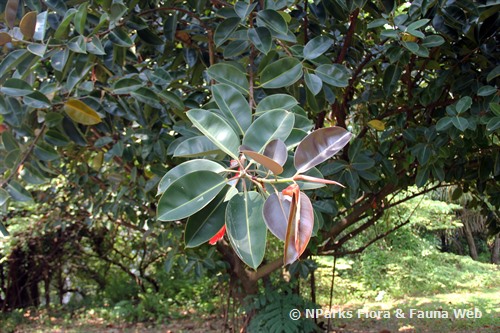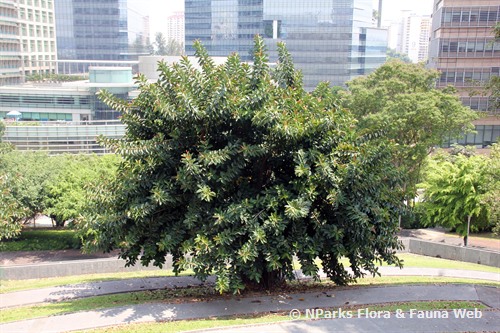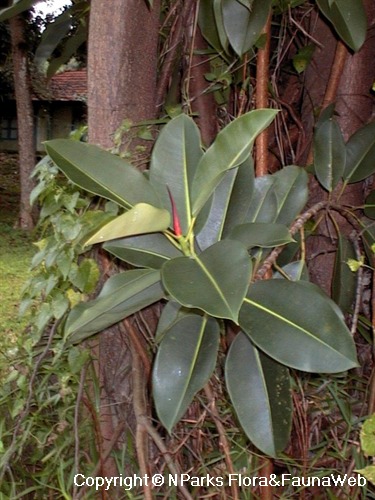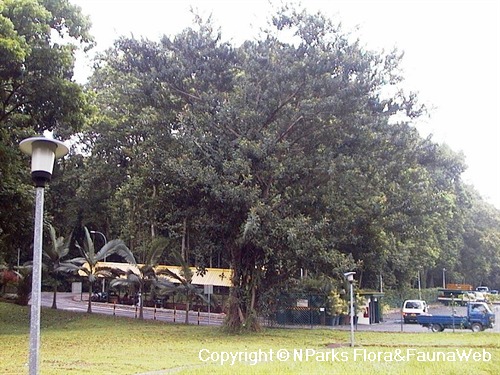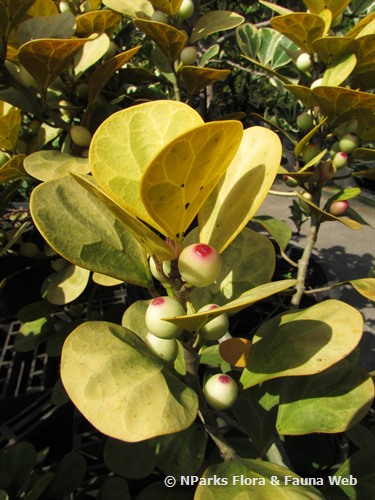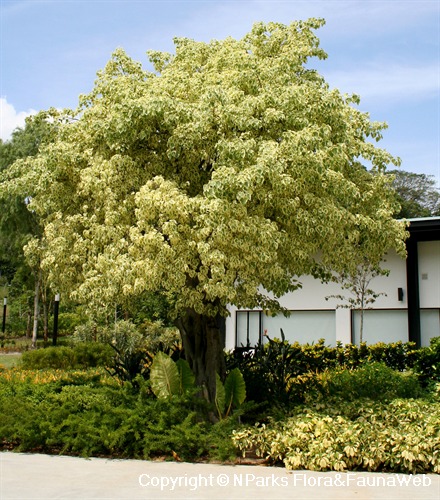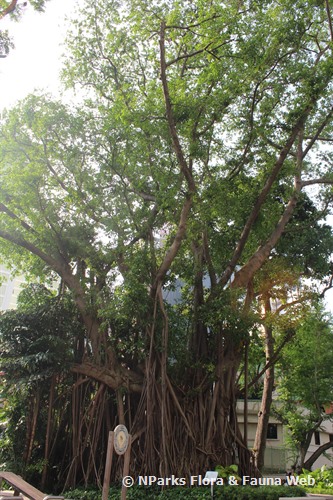
Back
Ficus elastica Roxb. ex Hornem.
| Family Name: | Moraceae |
| Common Name: | Indian Rubber Tree, Pokok Getah Rambong, Rambong, Indian Rubber, Indian Rubber Fig, Rubber Plant, Snake Tree, Assam Rubber, Bunoh Seteroh, Nyatus, Ara Rambong, 印度榕 |
Name
Classifications and Characteristics
| Plant Division | Angiosperms (Flowering Seed Plants) (Dicotyledon) |
|---|---|
| Plant Growth Form | Tree |
| Lifespan (in Singapore) | Perennial |
| Mode of Nutrition | Autotrophic |
| Maximum Height | 30 m |
Biogeography
| Native Distribution | Northeastern India, Myanmar, Peninsular Malaysia, Sumatra and Java. |
|---|---|
| Native Habitat | Terrestrial |
| Preferred Climate Zone | Tropical |
| Local Conservation Status | Non-native (Spontaneous (Casual)) |
Description and Ethnobotany
| Growth Form | A tree usually grows up to 30 m tall. |
|---|---|
| Trunk | This plant produces aerial roots, growing into woody trunks once reach the ground. |
| Foliage | Leaves are thick and glossy, arranged spirally, oblong to elliptical, measuring 10-30 cm long and 4-15 cm wide, with an acuminate tip. Midribs are prominent while the parallel side veins are less visible. Leaf stipules are pink to purplish. |
| Fruit | Fruits are borne in pairs, sometimes single in leaf axils, ellipsoid shaped, measuring 1-2 cm in diameter. Fruits turn yellow when ripe. |
| Habitat | Lowland rain forests and hill forests, found on cliffs and limestone hills |
| Associated Fauna | This plant is pollinated by Blastophaga clavigera. |
| Cultivation | This plant needs well-drained soils. Avoid over watering. Pruning is required to develop a strong structure. |
| Ethnobotanical Uses | Agriculture - Forestry: The milky white latex was used to make rubber in 1900s. Cultural / Religious: Heritage Tree : There are currently 3 individuals of Ficus elastica listed as Heritage Trees in Singapore and can be found in various parts of Singapore. To find out more about these trees, please visit the Heritage Tree Register. |
Landscaping Features
| Desirable Plant Features | Ornamental Foliage, Ornamental Form |
|---|---|
| Landscape Uses | Interiorscape/ Indoor Plant, Suitable for Roadsides, Container Planting |
| Usage Hazard - Cons | Irritant - Sap |
Fauna, Pollination and Dispersal
| Fauna Pollination Dispersal Associated Fauna | Bird-Attracting |
|---|---|
| Pollination Method(s) | Biotic (Fauna) (Insects (Ant, Beetle, Fly, Thrip, Wasp), Associated with: Blastophaga clavigera) |
| Seed or Spore Dispersal | Biotic (Fauna) |
Plant Care and Propagation
| Light Preference | Full Sun, Semi-Shade |
|---|---|
| Water Preference | Moderate Water |
| Plant Growth Rate | Moderate |
| Rootzone Tolerance | Drought Tolerant, Well-Drained Soils, Fertile Loamy Soils |
| Propagation Method | Seed, Stem Cutting, Air-Layering |
Foliar
| Foliage Retention | Evergreen |
|---|---|
| Mature Foliage Colour(s) | Green |
| Mature Foliage Texture(s) | Glossy / Shiny, Leathery |
| Foliar Type | Simple / Unifoliate |
| Leaf Area Index (LAI) for Green Plot Ratio | 3.0 (Tree - Intermediate Canopy) |
Floral (Angiosperm)
| Flower & Plant Sexuality | Unisexual Flowers |
Fruit, Seed and Spore
| Mature Fruit Colour(s) | Yellow / Golden |
|---|
Image Repository
Others
| Master ID | 1613 |
|---|---|
| Species ID | 2906 |
| Flora Disclaimer | The information in this website has been compiled from reliable sources, such as reference works on medicinal plants. It is not a substitute for medical advice or treatment and NParks does not purport to provide any medical advice. Readers should always consult his/her physician before using or consuming a plant for medicinal purposes. |

